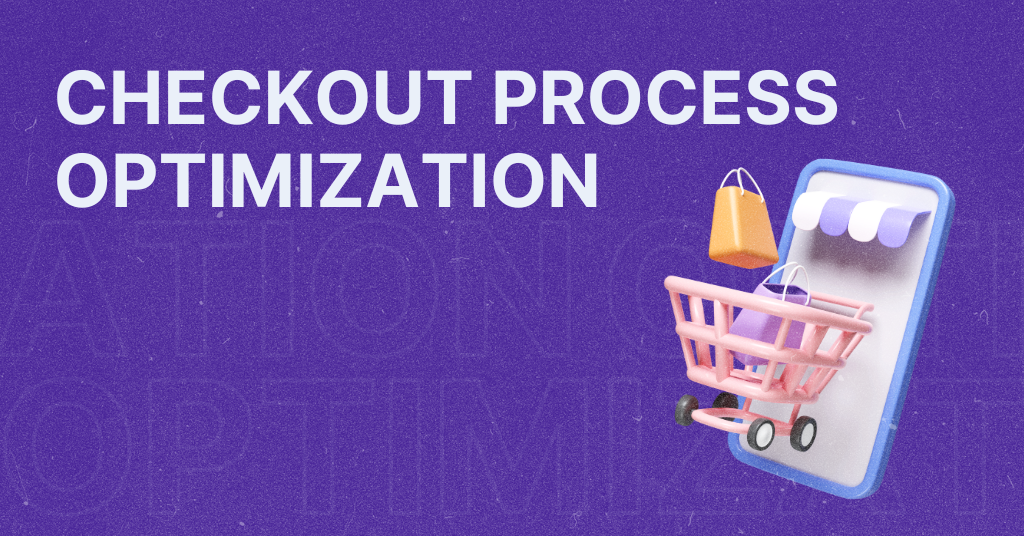
Mobile Analytics: 7 Ways to Increase Your Mobile Conversion Rates
In the era of mobile dominance, businesses must prioritize optimizing their mobile presence and maximizing conversion rates. Mobile analytics plays a critical role in understanding user behavior, identifying bottlenecks, and making data-driven decisions to enhance mobile conversions. Mobile analytics is a powerful tool that enables businesses to understand and optimize the mobile user experience, ultimately improving conversion rates and driving revenue growth. In this comprehensive article, we dive into the significance of mobile analytics, explore key metrics to measure mobile success and provide actionable strategies to enhance mobile conversion rates.
The Significance of Mobile Analytics
Mobile analytics is the process of collecting and analyzing user data on mobile phones so that mobile apps and websites can be improved for their users. This consequently will lead to companies increasing their profit.
The increasing adoption of smartphones has not only revolutionized the way people communicate but also transformed their entire approach to accessing information, interacting with brands, and making purchasing decisions. With smartphones becoming an essential part of everyday life, businesses cannot afford to overlook the significance of mobile devices in shaping consumer behavior.
Understanding the mobile audience and tailoring experiences to meet their expectations is essential for businesses to remain competitive in the digital marketplace. By embracing the opportunities presented by mobile devices, businesses can create stronger connections with their target audience and deliver seamless experiences that drive engagement and conversions.
The ubiquitous presence of smartphones has blurred the lines between online and offline interactions, allowing consumers to access information, compare products, read reviews, and make purchases at any time and from anywhere.
Businesses need to align their marketing efforts and optimize their mobile presence to cater to consumer behavior. By providing a seamless and intuitive mobile experience, businesses can capture the attention of mobile users and create meaningful touchpoints throughout their customer journey.
Furthermore, the personal nature of smartphones offers businesses unique opportunities for targeted marketing and personalized communication. Leveraging mobile analytics allows businesses to understand user preferences, behavior patterns, and demographics, enabling them to tailor their messaging and offerings to individual consumers. This personalized approach enhances customer satisfaction and significantly increases the chances of driving conversions and fostering long-term loyalty.
Mobile analytics provides valuable insights into user behavior, preferences, and pain points. By tracking and analyzing relevant metrics, businesses gain a comprehensive understanding of their mobile performance and can optimize their strategies to boost conversion rates.
Key Metrics for Mobile Analytics
By closely monitoring key mobile metrics businesses can gain a comprehensive understanding of their mobile performance, identify areas for improvement, and make data-driven decisions to optimize their mobile strategies. Improving conversion rates, reducing bounce rates, increasing session duration, addressing exit pages, and optimizing the conversion funnel are all essential steps in enhancing the overall mobile experience and driving successful mobile conversions.
Conversion Rate
The conversion rate is the fundamental metric to measure mobile success. It represents the percentage of visitors who complete a desired action, such as making a purchase or subscribing to a service, on a mobile device. Monitoring conversion rates helps evaluate the effectiveness of mobile marketing efforts. By analyzing conversion rates, businesses can evaluate the effectiveness of their mobile strategies and campaigns.
Increasing the conversion rate is a top priority for e-commerce businesses, and they can employ various tactics, such as optimizing the checkout process, enhancing product descriptions, and implementing persuasive call-to-action buttons to drive conversions. If you are an owner of an e-commerce business, learn quick hacks that will help you increase the conversion rate.
Bounce Rate
The bounce rate is a significant metric that indicates the percentage of users who land on a page and quickly exit without further engagement. High bounce rates suggest that visitors did not find what they expected or encountered usability issues. To improve the bounce rate, businesses need to focus on enhancing user experience and making content more relevant and engaging. Strategies like improving page load times, enhancing website navigation, and providing captivating visuals can help reduce bounce rates and encourage visitors to explore further.
Average Session Duration
Average session duration measures users’ average time on a mobile platform during a single visit. A longer session duration generally indicates higher user engagement and satisfaction. It implies that the mobile experience is well-designed and captivating enough to hold users’ attention. Businesses can optimize the average session duration by providing valuable and engaging content, personalizing recommendations, and offering seamless navigation. By improving the overall user experience, businesses can extend the session duration and increase the likelihood of conversions.
Exit Pages
Tracking exit pages helps businesses identify the specific pages where users tend to exit the site or app. By analyzing this data, businesses gain insights into the common exit points and can address specific issues hindering conversions. Optimizing the content, improving the design and layout, and addressing any usability issues on these exit pages can encourage users to stay longer and explore further, ultimately increasing the chances of conversion.
Funnel Analysis
Funnel analysis involves breaking down the conversion process into stages, from initial interaction to final action. This analysis helps identify drop-off points where users abandon the conversion process. By understanding these points, businesses can optimize their mobile experience to streamline the user journey, reduce friction, and increase conversions. Funnel analysis enables businesses to identify potential bottlenecks and implement targeted improvements at each stage of the conversion process, resulting in a smoother and more efficient user experience.
Use Mobile Analytics to Improve Conversion Rates
Mobile analytics plays a crucial role in the success of e-commerce businesses by providing valuable insights and data-driven strategies to enhance the mobile shopping experience, drive conversions, and increase revenue.
With OmniShop, you can get a mobile app that gives you all the analytics you need to get all the important insights on your customers to improve your conversion rate. Get it now by clicking on the following banner:

If you understand the analytics, you can use them to improve your conversion rate. Let’s see how.
Understanding Users to Create User-Centric Strategy
Mobile analytics allows businesses to deeply understand user behavior within the mobile commerce ecosystem. By tracking user interactions, preferences, and purchasing patterns, businesses can identify trends, preferences, and pain points. This knowledge empowers businesses to tailor their strategies to meet customer expectations and deliver personalized experiences, ultimately boosting conversions. Understanding user behavior helps businesses anticipate customer needs, optimize product offerings, and create more relevant and engaging mobile experiences. Putting the user at the center of the mobile experience is crucial. Conducting user testing, gathering feedback, and incorporating user preferences into mobile optimization strategies ensure a user-centric approach.
Mobile user behavior evolves rapidly. By staying up to date with industry trends and emerging technologies, businesses can adapt their strategies and provide innovative mobile experiences that align with user expectations.
Also, by staying informed about user behavior trends and changes, businesses can make informed decisions to improve conversion rates continually.
Optimizing User Experience
Mobile analytics provides businesses with essential data to optimize the mobile shopping experience. Businesses can identify areas where users may encounter friction or obstacles in their shopping journey by analyzing metrics such as session duration, bounce rates, and exit pages. This knowledge enables businesses to optimize mobile websites and apps, streamline navigation, improve load times, and simplify the checkout process, resulting in higher conversion rates. By continuously monitoring and improving the user experience based on analytics insights, businesses can enhance customer satisfaction, reduce churn, and increase sales.
Identifying Conversion Funnel Bottlenecks
Mobile analytics helps businesses analyze the conversion funnel, which represents the series of steps users take from initial interaction to final conversion. By tracking user behavior at each stage of the funnel, businesses can identify bottlenecks and areas where users drop off or abandon the conversion process. This insight allows businesses to optimize those specific stages, streamline the user journey, and reduce friction, ultimately increasing conversion rates.
Mobile Advertising Effectiveness
Mobile analytics helps businesses measure the effectiveness of their mobile advertising campaigns. By tracking metrics like click-through rates, conversions, and return on ad spend (ROAS), businesses can optimize their mobile advertising strategies, allocate resources to the most effective channels, and maximize their advertising budget to drive conversions and revenue.
Personalization and Targeted Marketing
Mobile analytics enables businesses to segment their mobile audience based on user behavior, demographics, and preferences. This segmentation allows for targeted marketing campaigns and personalized recommendations. Businesses can enhance engagement, build customer loyalty, and drive repeat purchases by delivering relevant content, offers, and product recommendations to individual users. Personalization based on mobile analytics insights helps businesses create a personalized shopping experience that resonates with customers, leading to higher conversion rates and customer satisfaction.
Real-Time Insights
Mobile analytics provides businesses with real-time insights into user behavior and campaign performance. This real-time data empowers businesses to make informed decisions on the fly, such as adjusting pricing, optimizing marketing campaigns, or addressing usability issues promptly. Real-time insights enable businesses to be agile in responding to market trends and customer needs, leading to improved conversions and competitive advantages. By leveraging real-time mobile analytics, businesses can identify and capitalize on emerging opportunities, optimize marketing spend, and drive revenue growth.
A/B Testing and Iterative Improvements
Mobile analytics facilitates A/B testing, allowing businesses to compare different variations of mobile experiences and measure their impact on conversion rates. By testing elements like layout, design, call-to-action buttons, and product placement, businesses can identify the most effective strategies for driving conversions. Iterative improvements based on analytics insights enable businesses to continuously enhance their mobile commerce performance. By using mobile analytics to experiment, analyze results, and refine mobile strategies, businesses can continuously optimize the user experience and improve conversion rates over time.
Conclusion
Mobile analytics is an indispensable tool for businesses seeking to optimize their mobile presence and drive higher conversion rates. By measuring key metrics, implementing effective strategies, and adopting a user-centric approach, organizations can create exceptional mobile experiences that lead to increased conversions. Continuous analysis, optimization, and adaptability are the cornerstones of success in the mobile-first era, ensuring businesses stay ahead in the competitive digital landscape.
Let’s book a 30-min mobile strategy session and give your shop a boost.
Let’s book a 30-min mobile strategy session and give your shop a boost.


